Gasa, the extreme northern valley of Bhutan is home to highlanders and nomadic community, the tiny nomadic land is well known for its unspoiled nature beauty and hot springs. The annual Gasa Tsechu (Festival) is comprised of choreographed mask dances and rituals portraying nomadic life in Bhutan. The festival is held in month of March annually and is one of the biggest events in the northern Bhutan.
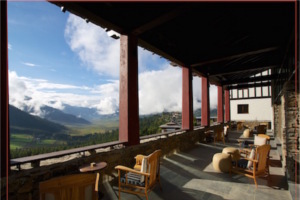
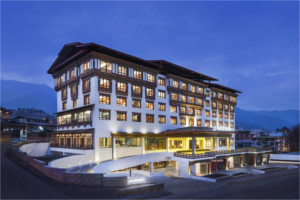
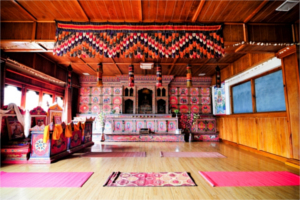
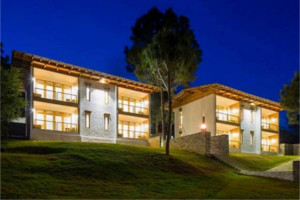
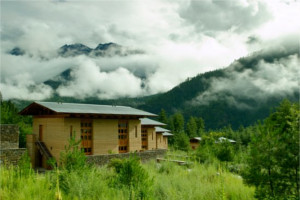
Fly into Paro valley.
The fight into Bhutan over the Himalayas is one of the most spectacular experiences. Particularly the flights from Delhi (India) and Katmandu (Nepal) fly past the majestic Mt. Everest, Kanchenjunga and the entire Himalayan range, visible on the left side of the plane as it glides towards Bhutan. On landing at Paro, you will be received by our representative. After customs and Immigration formalities, you will be escorted to Thimphu, the capital city.
Overnight in Thimphu.
Breakfast
Visit the National Memorial Chorten (Stupa), built in memory of the 3rd King of Bhutan. Visit the Art School and Changangkha Lhakhang (a temple built in 12th century by a Tibetan saint).
Visit the National Takin Reserve Center to see Takin, the national animal of Bhutan and Trashichhodzong (fortress of glorious religion). Trashichhodzong in its current form was completed in 1968 and it houses the throne room of His Majesty the King of Bhutan. It is also a center of monastic body and houses main secretariat building. The majestic Dzong located along the Wangchu (Thimphu River) has a Tendrel Thang which is the venue for Thimphu Dromchoe and Thimphu Tsechu, the annual Thimphu Festival where thousands of people fill the courtyard to witness the mask dances, traditional dances, and many more.
Visit Buddha Dordenma, the largest standing Buddha Statue in the world. Buddha Dordenma is 54 meters tall, one of the largest Buddha Shakyamuni statue in the world, fulfilling a prophecy that mentioned a large statue of either Guru Padmasambhava, Buddha or of a (Vajrakilaya) Phurba would be built in the region to bestow blessings, peace, and happiness on the world, the statue erection was started in 2006 and completed in 2015. The statue is mentioned in the ancient Terma of Guru Padmasambhava himself dated from approximately the sixth century, the prophesized Terma was recovered some 672 years ago by Terton Dorje Lingpa (1346) and 104 years and after 568 years ago by Terton Pema Lingpa.
Stop at Dochula pass (3100m) on route to Punakha from Thimphu. Dochula pass is one of the famous landmarks in Bhutan from which one can sight the Himalayan Range of Bhutan on clear winter days. The place is adorned with Druk Wangyel Chorten, 108 stupas built to honor the 4th king of Bhutan and bring peace to the region. The stupas were built under the patronage of Ashi Dorji Wangmo Wangchuck.
Descend to Punakha Valley (1280m).
Punakha valley served as the capital of Bhutan till 1955 until it was shifted to Thimphu. The Punakha Dzong is still the winter seat of Je Khenpo (Chief Abbot) of the monastic body as the place has a temperate climate with Phochu and Mochu Rivers flowing through the fertile fields of the valley.
On the way visit Chimi Lhakhang.
The Lhakhang, situated on a hillock in the centre of the valley, is also known as the temple of fertility. It is widely believed that couples who do not have children and wanting one, if they pray at this temple, they are usually blessed with a child very soon. The trail leads across rice fields to the tiny settlement of Pana, meaning ‘field’. A walk through the village near the temple will give you rare glimpses into the daily life and the lifestyle of the villagers.
Visit Punakha Dzong.
Punakha Dzong or Pungthang Dewa Chenpai Phodrang, the palace of bliss was built in 1937 by Zhabdrung Ngawang Namgyel. The second oldest Dzong is religiously and architecturally significant to Bhutanese as it houses several sacred relics, scriptures, statues and is the place where the first king of Bhutan was crowned in 1907. Punakha Dzong is also famous for Punakha Drupchen where the 17th century battle scene with Tibetan invaders are recreated and is followed by Punakha Tsechu where grand Thongdrel of Guru Rinpoche is unfurled with costumed mask dances and rituals.
Overnight at Punakha
In the morning hike to Khamsum Yulley Namgyel Chorten through fields of vegetables, rice paddies, and tiny hamlets. The Chorten holds very special significance The Chorten holds very special significance as it was consecrated in order to bring peace and harmony to all the living beings in the region.
After lunch drive to Gasa which is about 47km from punakha Valley.
Overnight at Gasa.
Early breakfast
Drive to the venue of the festival and witness the festival all day.
The Gasa Tsechu is considered to be the biggest of its kind to be celebrated in sparsely populated highlander’s district. The local folk dances are very unique to the community of the Gasa and along with it are colorful mask dances.
Overnight at Gasa.
On the second day have a chance to witness 401 years old local dance originated from Gasa.
Goenzhay is one of the main highlights of the three-day Gasa tshechu.
As per the local elders, it was initially performed at Wokala, a border area on the Laya side by the people of Goen (present day Khatoe gewog) to welcome Zhabdrung Ngawang Namgyel to Bhutan. They were accompanying Goenhoptsho lama. Goenhoptsho lama invited Zhabdrung to Bhutan.
The Goenzhay performers wear thick woolen red ghos matched with a black tego and are led by a Zhapey (dance leader) who wears a helmet. Goenzhay is a long form dance category, which is performed throughout the three-day Tshechu.
The Pazaps or performers would have to stay inside the dzong prior to tshechu and stay in the dzong during the three-day tshechu. Goenzhay is not just performed during the Gasa tshechu, but also during the annual communal festival called Tshechudrak in Gasa, which is held once a year.
Overnight at Gasa
Attend the final day of the festival to get a chance to be blessed by revered lamas and then drive back to Punakha in the afternoon.
Overnight at Punakha.
Early breakfast
Drive back to Paro valley via Dochula pass (3100m)
Visit Ta Dzong, the National Museum in Paro later afternoon. The dzong was originally built as a watchtower in 1649, strategically located overlooking the Rinpung Dzong and the Paro valley. The watchtower was renovated in 1968 and transformed into national museum. The round shaped structure houses collection of Thangkas, 3D map of Bhutan, egg believed to be laid by a mule, iron links from Iron Bridge at Tamchog and many ancient and modern artifacts.
Note: Photography and videography are not allowed inside the museum.
Visit Rinpung Dzong, the administrative and religious center of Paro Dzongkhag (district). The fortress name translates to “Fortress on a Heap of Jewel” and has long history of having defended Tibetan invasion through the site.
Overnight at Paro.
Early breakfast
Hike for about 4 hours to Paro Taktsang, the famous Tigers Nest monastery which is perched on a cliff at about 900m above the Paro valley.
In the afternoon visit Kyichu Lhakhang, the oldest temple in Paro. Originally built in 7th century by Tibetan Emperor, it’s one of the 108 temples he built in the region. The temple is believed to have spiritual treasures concealed by Guru Padmasambhava and the two orange trees in the courtyard defy the natural way of orange trees usually growing in lower altitude and it’s believed to bear fruit throughout the year.
daily tariff:USD 250 Per person per night
surcharges:
Solo Traveller: USD 40 per night
Dual Traveller: USD 30 per person per night
Three travellers and above: surcharges not applicable
Visa fees: One time payment of USD 40 per person.
daily tariff:USD 200 Per person per night
surcharges:
Solo Traveller: USD 40 per night
Dual Traveller: USD 30 per person per night
Three travellers and above: surcharges not applicable
Visa fees: One time payment of USD 40 per person.
A minimum of 3 star accommodation (4 & 5 star may require an additional premium).
All meals
A licensed Bhutanese tour guide for the extent of your stay
All internal transport (excluding internal flights)
Camping equipment and haulage for trekking tours